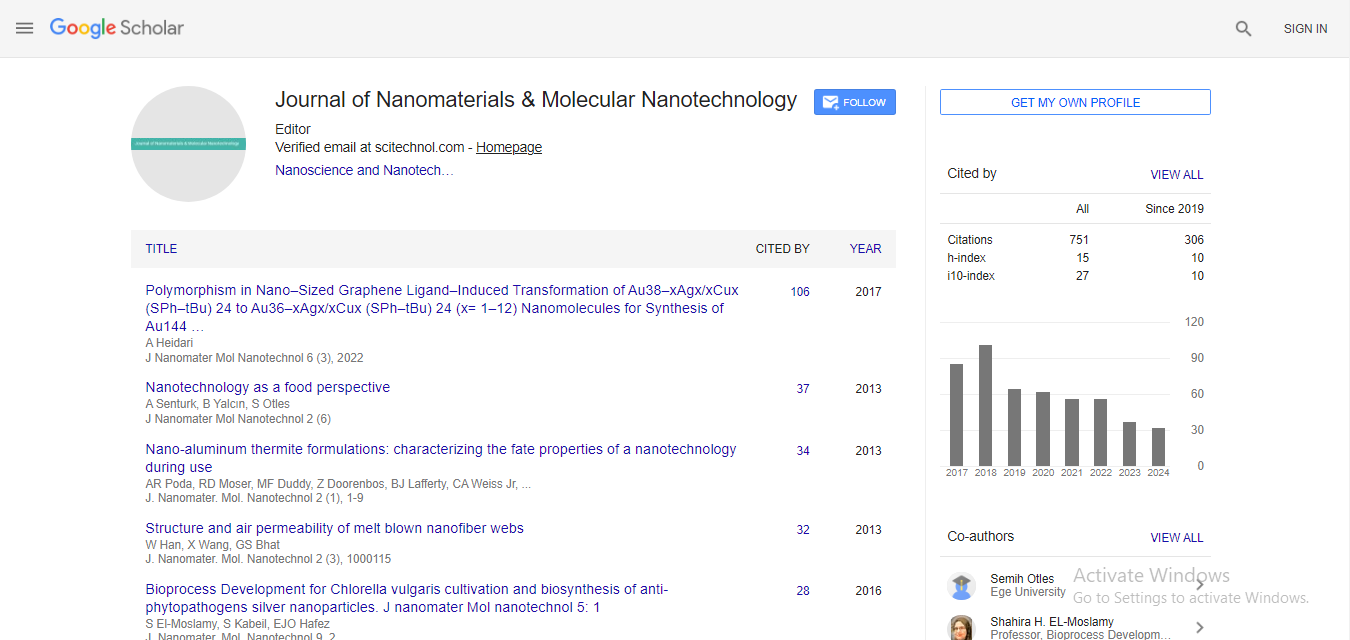Research Article, J Nanomater Mol Nanotechnol Vol: 5 Issue: 2
Silver Sulfide Nanoparticles as Photothermal Transducing Agents for Cancer Treatment
| Lun Ma1, Lihua Li2, Xueshi Li2, Lier Deng1,3, Huibin Zheng4, Yu Zhang2*, Junying Zhang4, Qingshui Yin2, Brian Bui1 and Wei Chen1* | |
| 1Department of Physics, The University of Texas at Arlington, Arlington, TX 76019-0059, USA | |
| 2Guangzhou General Hospital of Guangzhou Military Command, Guangzhou, Guangdong 510010, China | |
| 3School of Optoelectronic Engineering, Xi’an Technological University, Xi’an, P.R. China | |
| 4Department of Physics, Beihang University, Beijing, P.R. China | |
| Corresponding authors :Wei Chen Department of Physics, The University of Texas at Arlington, Arlington, TX 76019-0059, USA, Fax: 817-272-3637 Tel: 817-272-1064 E-mail: weichen@uta.edu Dr. Yu Zhang Guangzhou General Hospital of Guangzhou Military Command, Guangzhou 510010, China, E-mail: luck_2001@126.com |
|
| Received: October 1, 2015 Accepted: April 25, 2016 Published: April 30, 2016 | |
| Citation: Ma L, Li L, Li X, Deng L, Zheng H, et al. (2016) Silver Sulfide Nanoparticles as Photothermal Transducing Agents for Cancer Treatment. J Nanomater Mol Nanotechnol 5:2. doi:10.4172/2324-8777.1000182 |
Abstract
Silver Sulfide Nanoparticles as Photothermal Transducing Agents for Cancer Treatment
Silver sulfide (Ag2S) nanoparticles have been recently revealed as attractive nanoagents with near-infrared fluorescence for biological imaging. However, there have been no investigations about their photothermal effect, which can be used to convert nearinfrared light energy to heat for cancer treatment. In this work, the Ag2S nanoparticles are investigated, for the first time, as energy transducing agents on cancer cell destruction. We have used a one-step wet chemistry method in the nanoparticle synthesis. 3-mercaptopropionic acid (MPA) is newly applied as a surfactant to stabilize the obtained Ag2S nanoparticles, allowing them to be highly soluble in water. The nanoparticles have a monoclinic crystal structure with average sizes of ~40 nm, and they display a broad absorption from visible to near-infrared light wavelengths and emissions in 900-1200 nm range. When irradiated by an NIR laser of 808 nm, it is found that the temperature of the aqueous Ag2S nanoparticle solution increases as a function of Ag2S concentration and laser power density. The interesting phenomenon has led us to conduct further photothermal cancer cell ablation studies using human osteosarcoma (U-2OS) cells. Present in several methods, our results have shown that the as-prepared Ag2S nanoparticles can induce efficient photothermal destruction on the U-2OS cells at proper laser doses and nanoparticle concentrations, which may make them a promising heat transducing agent for photothermal cancer therapy.
 Spanish
Spanish  Chinese
Chinese  Russian
Russian  German
German  French
French  Japanese
Japanese  Portuguese
Portuguese  Hindi
Hindi 



